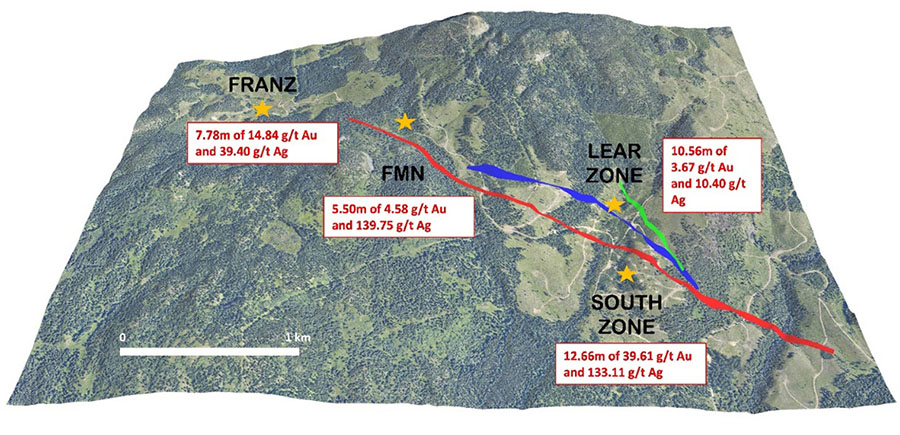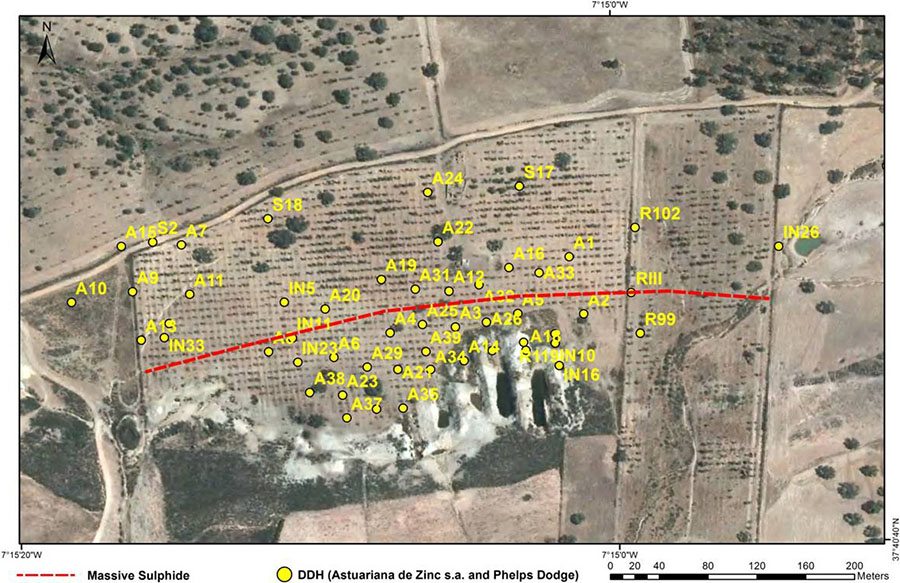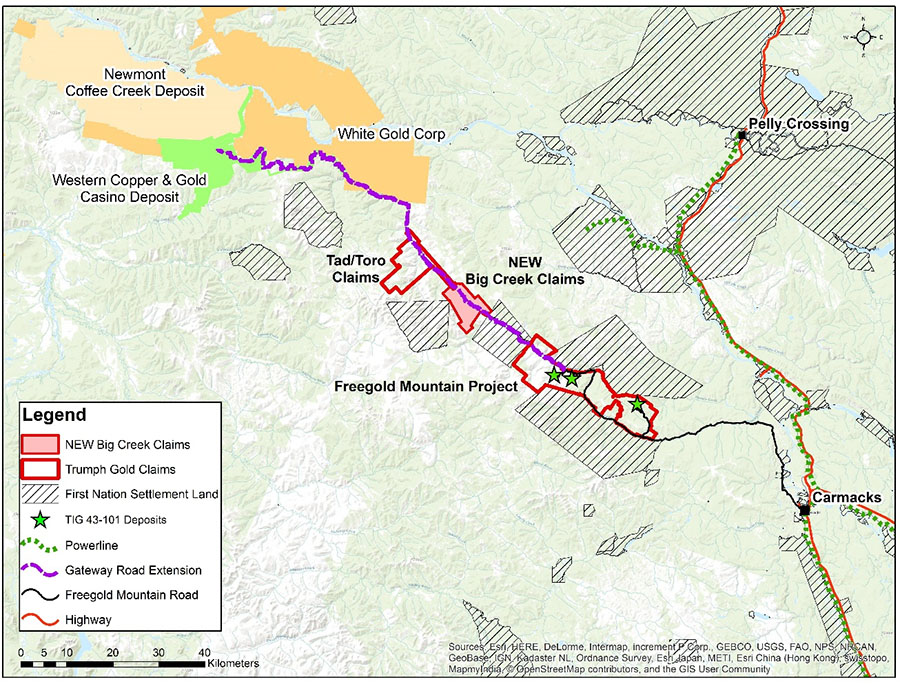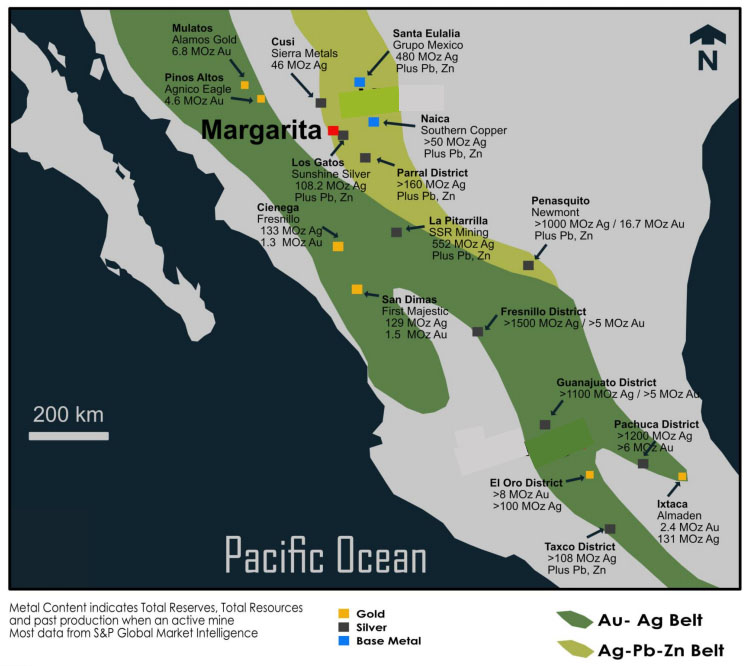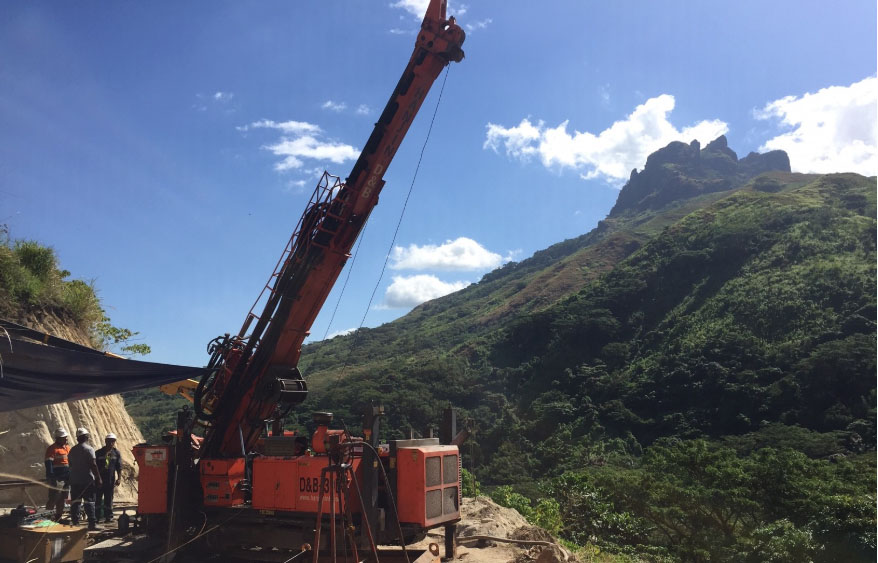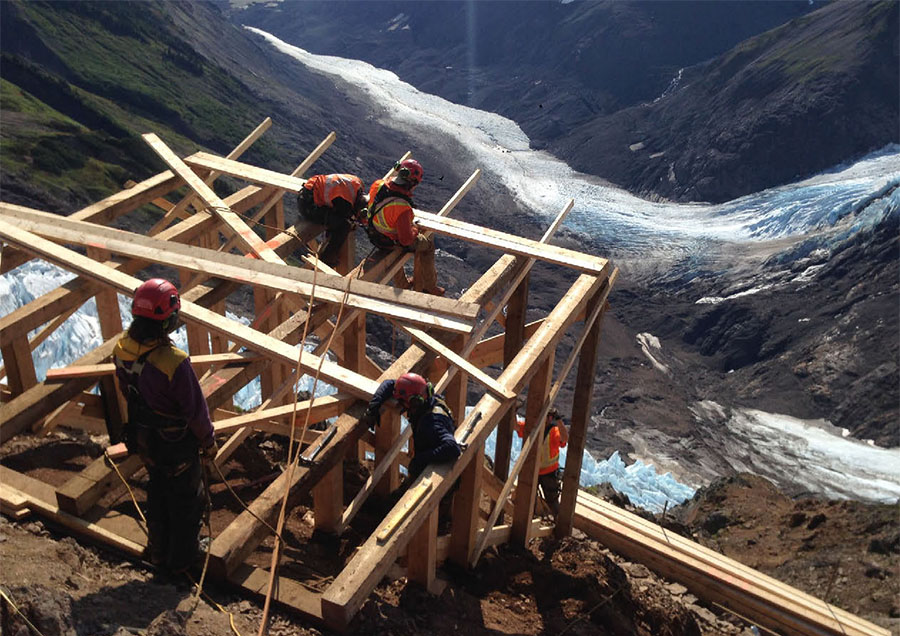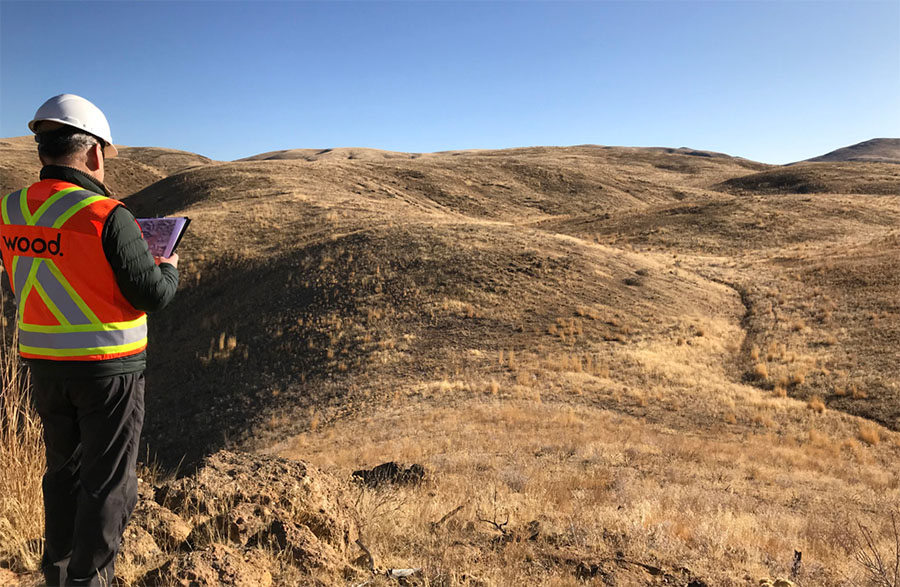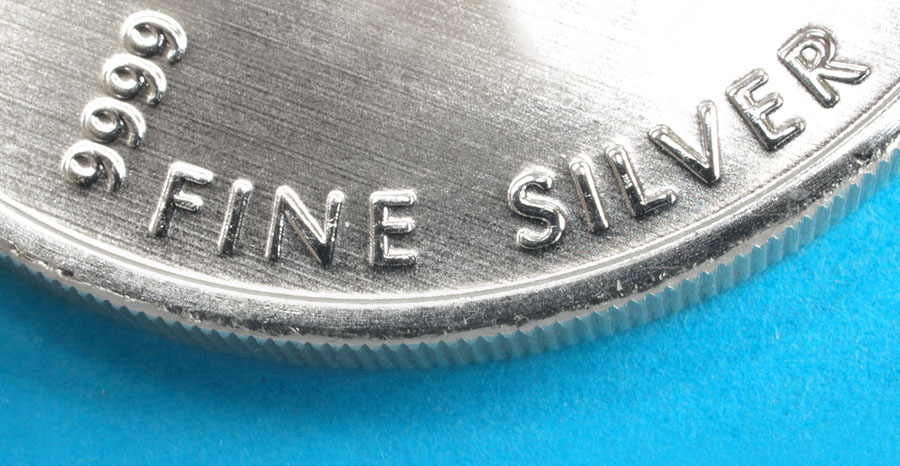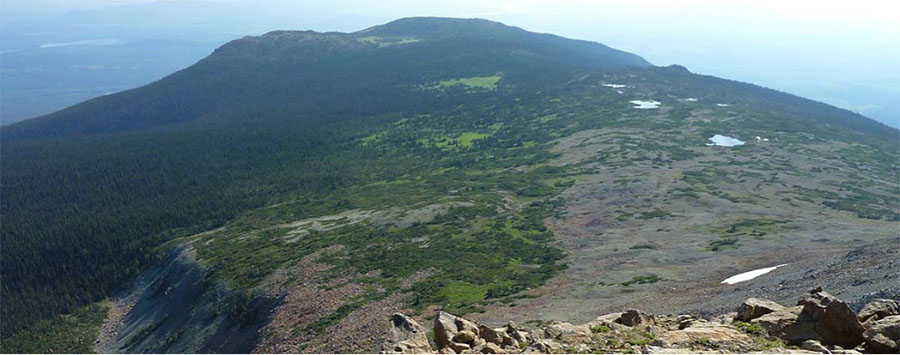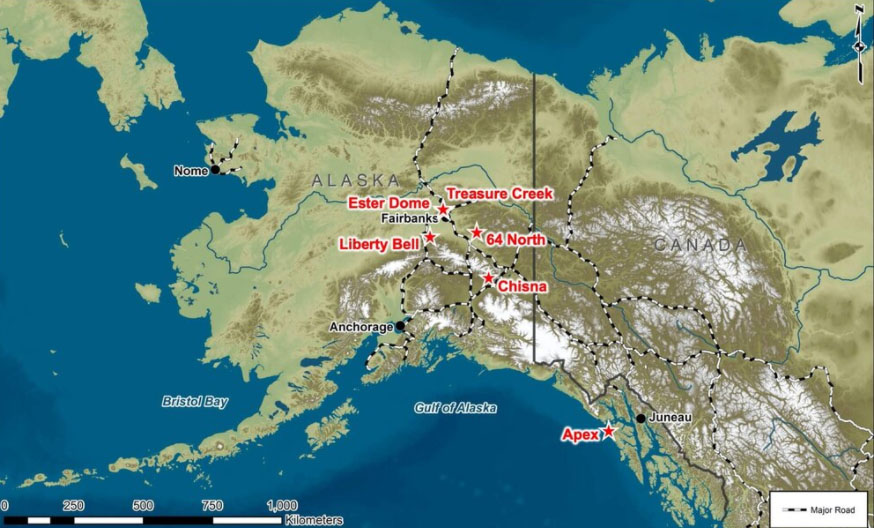TICKERS: ALK; ANLKY, ARU, LYC, , NWR
Richard Karn: Australia's Stunning Resource Wealth
Source: The Gold Report (3/22/10)
 Richard Karn, managing editor of The Emerging Trends Report, is taking a hiatus from North American markets to explore the long-term investment opportunities in Australian resources. The Gold Report caught up with Richard, currently in Australia gearing up for the trip, in an email exchange about his journey to circumnavigate the country visiting a wide variety of precious and specialty metal projects "down under."
Richard Karn, managing editor of The Emerging Trends Report, is taking a hiatus from North American markets to explore the long-term investment opportunities in Australian resources. The Gold Report caught up with Richard, currently in Australia gearing up for the trip, in an email exchange about his journey to circumnavigate the country visiting a wide variety of precious and specialty metal projects "down under."
The Gold Report: Richard, we understand you're embarking in mid-April on a multi-month Australian tour of 30 to 40 precious and specialty metal mining projects. That's a pretty ambitious endeavor. What makes Australia so intriguing to you?
Richard Karn: Australia possesses stunning resource wealth, which at the end of 2008 26,179 mining and energy projects were exploiting. Outside of Canada, Australia is arguably the most politically secure country in the world. It is mining-friendly and has a history of honoring contractual law.
While Canada's substantial natural resources and less "innovative" financial sector will continue to favor Canadian over American equity markets, Canada is nonetheless leveraged to the U.S. economy. Consequently, we believe Australia is better positioned to supply emerging markets in the near term.
We've received invitations to visit projects Australia-wide, ranging from iron-loading facility expansions in the Pilbara to concentrated solar farms in South Australia, bauxite resource projects in the Kimberley to gold mines in South Australia, port expansion projects in New South Wales to LNG gasification plants in Queensland, uranium projects in the Northern Territories to the Super Pit in Western Australia.
North American investors have access to a tremendous amount of industry research regarding Australian base metal and energy production; what is harder to get are reliable first-hand assessments of the remote but arguably more critical precious and specialty metal projects either under development or undergoing expansion that will supply markets going forward. That's what we're aiming to provide.
TGR: Australian mining companies certainly have been getting a lot of attention from China and Japan lately.
RK: That's right; China is now Australia's largest trading partner. In order to keep its command economy operational, the Chinese government is taking all the steps necessary to secure strategic minerals supply. Australia is uniquely positioned to supply not only China but also India, Indonesia, Korea and Taiwan—all of which are experiencing similar growth, economically and demographically.
TGR: What's the current status of Australia's trade relations with China?
RK: Australia's trade relations with China are not without difficulties. We've all heard of mining executives in China who have been upbraided, harassed and jailed; Chinese state-sponsored businesses have reneged on signed contracts; numerous resource deals have collapsed due to Chinese attempts to renegotiate contracts long after work has begun; and Chinese arrogance and high-handedness is coming to be broadly resented throughout Australasia.
TGR: Has this had an effect on Australia's attitude towards foreign investment?
RK: Yes, it certainly has. It has provoked a backlash by Australian business and government to limit foreign (read Chinese) encroachment in the resource sector: despite the glaring need for foreign direct investment, a number of resource deals involving the Chinese have been blocked by Canberra. There is a move afoot sponsored by BHP Billiton to limit state-owned company and sovereign fund investment in greenfield and early stage resource projects to 50%—with the pre-condition that half of that foreign ownership must be floated on the Australian stock market within 15 years.
TGR: Can you talk a little bit about the fundamentals driving Australia's current resources boom?
RK: Sure. Demand for Australian resources is increasing at a staggering rate: in the six months ended October 2009, 15 major mineral and energy projects with cumulative capital expenditures of $3.9 billion were completed. And another 74 projects were at an advanced stage, representing a further expenditure of $112.5 billion.
Of those projects, 80% were located either in Western Australia or Queensland and accounted for more than 90% of total expenditures. Capex on mining equipment alone through October 2009 amounted to $35.7 billion—that's a 30% increase over 2007–08 and more than three times the average annual real expenditure since 1980–81.
TGR: Those numbers seem impressive.
RK: Absolutely, and 2008 saw natural resource exports surpass those of manufacturing for the first time. In addition to the projects mentioned, there are currently 341 projects planned through 2015, at an estimated cost of $280 billion.
TGR: And that brings us to financing. Given that bought-deal financing is now a possibility only in Canada, how will Australian miners finance all these projects?
RK: Well, although making strides in the right direction, Australian capital markets have not fully recovered from the 2008 collapse of Opes Prime —long a source of mining finance, particularly junior ventures—and are unlikely to meet the near to intermediate-term demand. As a consequence, 78% of those 341 projects have yet to arrange financing. We see this as an exciting opportunity for North American capital.
TGR: What other sources of funding are available to them?
RK: The opportunities are somewhat limited. The corporate bond market is too small; it's about half the size of UK or U.S. markets relative to GDP, and the ability of equity markets to bankroll such projects has been constrained by dominant companies, such as Rio Tinto, which were quick to tap shareholders as soon as the global financial crisis began.
TGR: What about institutional investment?
RK: Given Australia's history, there is less institutional involvement than one would think; they regard long-term mining projects as high risk and, ironically, prefer real estate and emerging market investments. Given these limited options, it's not surprising that Australian companies constitute the largest cohort in an ongoing rush to access capital markets via reverse listings. One of the reasons we see our visit as so essential is that since there are so many companies using reverse listings to speed access to equity markets, a first-hand assessment and screening is mandatory to guard against the "locusts" that seem to come out from under their rocks during every resource boom, especially in the "hot plays."
TGR: Do you see that the U.S. is in a recovery mode? How has this affected your decision to undertake this venture?
RK: We are cognizant that prevailing market theory contends the scale of the U.S. recovery will be proportionate to the severity of the decline in output during the recession, implying this recovery will surprise to the upside. We are also aware of the historical trend for high yield outperformance such as that witnessed over the last year to presage three to four years of positive equity returns. But we think a large part of the recovery is already priced into the markets.
We anticipate uneven range-bound markets in North America through the 2010 mid-term elections, which are shaping up to be a referendum on the Obama administration. Contrary to prevailing market sentiment, we see limited further upside in equity markets over the next eight months as a fledgling renaissance in American manufacturing could be undermined by proposed and pending legislation; in the face of such uncertainty, we think now is the ideal time to undertake the proposed boots-on-the-ground survey of Australian precious and specialty metal projects.
TGR: Can you talk a bit about your take on the supply imbalance?
RK: We have written numerous reports pertaining to the growing supply imbalance, especially in precious and specialty metals. Not including gold, of the 41 precious and specialty metals we have identified as experiencing some form of threat to supply, be it from nationalization or mercantilist policy, scarcity of supply, lacking substitutes or being subject to supply interruptions, dissipative uses, or byproduct sourcing, 36 are mined, or will be mined within the next three years in Australia, primarily in two states, Western Australia (WA) and Queensland (QLD).
Whether for use in ever more sophisticated information and "green" technologies, alloys with far higher heat and stress tolerances, electric or hybrid vehicles, myriad military applications, consumer electronics and home appliances, or high voltage transmission lines and equipment, material performance increasingly relies on specifications that can only be met by the unique characteristics of these precious and specialty metals. The combination of the aforementioned supply constraints coupled with those in the capital markets of the last 18 months have been slowing supply response.
Further, export restrictions in China (rare earth minerals, tungsten, antimony etc), the March of Marxism in South Africa (Platinum Group Metals, diamonds, gold, chromium), or continuing instability in the Democratic Republic of Congo (cobalt), to highlight but a few examples, are increasingly rendering secure sources of these metals a national priority in developed economies, as is witnessed by the initiative announced last December by the Japanese government to secure supplies of rare earth minerals for its automotive and high tech industries.
What we are looking for are good, solid, listed, or dual listed, Australian companies to meet the supply constraints we see going forward.
TGR: Can you give us an idea of some of the projects and companies you're talking about?
RK: Sure. Two examples of the kinds of projects we are especially interested in are potential rare earth element (REE) producers and thin seam gold miners.
Rare earth elements are not in fact all that rare—just extremely difficult and expensive to recover because they are so chemically similar that they are a nightmare to separate economically.
Essentially, each REE deposit is unique and requires a great deal of time and money to develop a custom recovery process: flow sheet, benchtop testing, and then a demonstration pilot plant producing significant quantities of the mineral compounds for testing commercial viability—all must be completed successfully before a project can move forward toward funding and actual production. This can take a decade or more.
China was the first cab off the rank (Australian slang for "the one who starts something") in recognizing the opportunities in rare earth elements more than 20 years ago. Unencumbered by profit motive or environmental concerns and able to direct large amounts of both subsidized energy and inexpensive labor at the undertaking, they developed the process engineering necessary to dominate the rare earth element and yttrium market—today there is simply no competing with the Chinese on price.
Over the last few years, however, China has also reduced export quotas, increased export taxes, stopped issuing new rare earth element mining licenses, and taken other steps designed to keep their rare earth elements and yttrium in-country, in effect driving manufactures of downstream, value-added products to relocate to China, which presents a threat to intellectual property rights. China has also recently begun to stockpile rare earth elements and has announced there may only be a 15-year supply of the heavy rare earth elements.
We view these developments as a remarkable opportunity. Outside of China, we only see eight significant rare earth prospects, of which only four have much chance of being in production by 2013-14. Of those four projects, one is the Mountain Pass facility in California owned by Molycorp that is processing stockpiled rare earth elements and preparing to go back into production, but it is not publicly listed. The other three are all in Australia and operated by Lynas Corporation (ASE:LYC), Alkane Resources (ASX:ALK) and Arafura Resources (ASX:ARU).We have already spent a considerable amount of time with one of these companies, Alkane Resources, which we are recommending to clients, and are making arrangements to visit both Lynas and Arafura when we are in their part of the country.
On the gold front, Australia is rife with gold mines, and the larger projects are pretty well covered by North American analysts. We believe the reflation theme is likely to transition into a significant inflation problem simply because the Fed appears to be proud of being both behind the curve and for having adopted a reactionary policy response to the very bubbles their previous policies encouraged. This means the huge-volume open pit operations are likely to face considerable cost pressures going forward. In fact, these cost pressures may already be starting to show up in both equipment and labor shortages; energy prices have been creeping higher for some time too, and the combination of the three will crimp margins going forward. So we like some of the smaller, less-covered Australian thin-seam miners in this regard because we think these very high grade operations will have a better chance of managing costs going forward. Names like Morning Star Gold (ASX:MCO), Silverlake Resources (ASX:SLR), and Northwest Resources (ASX:NWR). We are particularly interested in Northwest Resources because they will have a significant antimony byproduct, and antimony is a specialty metal under threat because 80% of it comes from China, and they have both lowered export quotas and are closing mines.
TGR: Any last thoughts?
RK: Even this early in our survey, interaction with Australian mining companies has led us to broaden the scope and range of our specialty metal interests.
Zirconium was not on our original list of 41 precious and specialty metals, 42 if you include gold, we came to Australia to investigate—but it should have been and is now. Specialists we have spoken with are projecting a production shortfall by as early as 2015, driven primarily by China and emerging market demand, which may be amplified by a potential nuclear energy revival: zirconium metal's primary use is in nuclear fuel rods, and its byproduct hafnium's primary use is in control rods.
In this space, two names we like are Iluka Resources (ASX:ILU), as a turnaround story, and the aforementioned Alkane Resources, whose Dubbo project will produce significant quantities of zirconium products, rare earth element concentrates and niobium-tantalum concentrates.
It is critical to keep in mind that by and large, the higher up the value-added chain a manufacturer is, the more dependent they are on the unique properties of these precious and specialty metals; further, an economic recovery and future expansion in the U.S. and OECD is simply not possible without them—and in fact may be predicated on continued, secure access to these metals.
In mid-April 2010 Richard Karn is embarking on a six- to nine-month trip circumnavigating Australia by four-wheel drive to evaluate 30 to 40 remote precious and specialty metal resource projects and to recommend the stocks of companies that are well positioned to supply burgeoning market demand for these critical metals. Karn, as managing editor of The Emerging Trends Report [www.emergingtrendsreport.com], has a broad, multi-disciplinary background, industry contacts, and a working knowledge of these metals as well as considerable research, analytical and writing experience pertaining to them. His firm has published nine Emerging Trends Reports, which were updated in the aftermath of the global financial crisis and published in the form of an eBook, Credit & Credibility. If you would be interested in participating in the exciting venture, please contact Mr. Karn at [email protected].
Want to read more exclusive Gold Report interviews like this? Sign up for our free e-newsletter, and you'll learn when new articles have been published. To see a list of recent interviews with industry analysts and commentators, visit our Expert Insights page.DISCLOSURE:
1) The following companies mentioned in the interview are sponsors of The Energy Report or The Gold Report: None
3) Richard Karn—Of the eight companies mentioned, at the moment the only one we currently own is in a fund we run, which recently purchased shares of Northwest Resources Ltd. (NWR:ASX). We do not received compensation from any of the companies mentioned.
Richard Karn: Australia possesses stunning resource wealth, which at the end of 2008 26,179 mining and energy projects were exploiting. Outside of Canada, Australia is arguably the most politically secure country in the world. It is mining-friendly and has a history of honoring contractual law.
While Canada's substantial natural resources and less "innovative" financial sector will continue to favor Canadian over American equity markets, Canada is nonetheless leveraged to the U.S. economy. Consequently, we believe Australia is better positioned to supply emerging markets in the near term.
We've received invitations to visit projects Australia-wide, ranging from iron-loading facility expansions in the Pilbara to concentrated solar farms in South Australia, bauxite resource projects in the Kimberley to gold mines in South Australia, port expansion projects in New South Wales to LNG gasification plants in Queensland, uranium projects in the Northern Territories to the Super Pit in Western Australia.
North American investors have access to a tremendous amount of industry research regarding Australian base metal and energy production; what is harder to get are reliable first-hand assessments of the remote but arguably more critical precious and specialty metal projects either under development or undergoing expansion that will supply markets going forward. That's what we're aiming to provide.
TGR: Australian mining companies certainly have been getting a lot of attention from China and Japan lately.
RK: That's right; China is now Australia's largest trading partner. In order to keep its command economy operational, the Chinese government is taking all the steps necessary to secure strategic minerals supply. Australia is uniquely positioned to supply not only China but also India, Indonesia, Korea and Taiwan—all of which are experiencing similar growth, economically and demographically.
TGR: What's the current status of Australia's trade relations with China?
RK: Australia's trade relations with China are not without difficulties. We've all heard of mining executives in China who have been upbraided, harassed and jailed; Chinese state-sponsored businesses have reneged on signed contracts; numerous resource deals have collapsed due to Chinese attempts to renegotiate contracts long after work has begun; and Chinese arrogance and high-handedness is coming to be broadly resented throughout Australasia.
TGR: Has this had an effect on Australia's attitude towards foreign investment?
RK: Yes, it certainly has. It has provoked a backlash by Australian business and government to limit foreign (read Chinese) encroachment in the resource sector: despite the glaring need for foreign direct investment, a number of resource deals involving the Chinese have been blocked by Canberra. There is a move afoot sponsored by BHP Billiton to limit state-owned company and sovereign fund investment in greenfield and early stage resource projects to 50%—with the pre-condition that half of that foreign ownership must be floated on the Australian stock market within 15 years.
TGR: Can you talk a little bit about the fundamentals driving Australia's current resources boom?
RK: Sure. Demand for Australian resources is increasing at a staggering rate: in the six months ended October 2009, 15 major mineral and energy projects with cumulative capital expenditures of $3.9 billion were completed. And another 74 projects were at an advanced stage, representing a further expenditure of $112.5 billion.
Of those projects, 80% were located either in Western Australia or Queensland and accounted for more than 90% of total expenditures. Capex on mining equipment alone through October 2009 amounted to $35.7 billion—that's a 30% increase over 2007–08 and more than three times the average annual real expenditure since 1980–81.
TGR: Those numbers seem impressive.
RK: Absolutely, and 2008 saw natural resource exports surpass those of manufacturing for the first time. In addition to the projects mentioned, there are currently 341 projects planned through 2015, at an estimated cost of $280 billion.
TGR: And that brings us to financing. Given that bought-deal financing is now a possibility only in Canada, how will Australian miners finance all these projects?
RK: Well, although making strides in the right direction, Australian capital markets have not fully recovered from the 2008 collapse of Opes Prime —long a source of mining finance, particularly junior ventures—and are unlikely to meet the near to intermediate-term demand. As a consequence, 78% of those 341 projects have yet to arrange financing. We see this as an exciting opportunity for North American capital.
TGR: What other sources of funding are available to them?
RK: The opportunities are somewhat limited. The corporate bond market is too small; it's about half the size of UK or U.S. markets relative to GDP, and the ability of equity markets to bankroll such projects has been constrained by dominant companies, such as Rio Tinto, which were quick to tap shareholders as soon as the global financial crisis began.
TGR: What about institutional investment?
RK: Given Australia's history, there is less institutional involvement than one would think; they regard long-term mining projects as high risk and, ironically, prefer real estate and emerging market investments. Given these limited options, it's not surprising that Australian companies constitute the largest cohort in an ongoing rush to access capital markets via reverse listings. One of the reasons we see our visit as so essential is that since there are so many companies using reverse listings to speed access to equity markets, a first-hand assessment and screening is mandatory to guard against the "locusts" that seem to come out from under their rocks during every resource boom, especially in the "hot plays."
TGR: Do you see that the U.S. is in a recovery mode? How has this affected your decision to undertake this venture?
RK: We are cognizant that prevailing market theory contends the scale of the U.S. recovery will be proportionate to the severity of the decline in output during the recession, implying this recovery will surprise to the upside. We are also aware of the historical trend for high yield outperformance such as that witnessed over the last year to presage three to four years of positive equity returns. But we think a large part of the recovery is already priced into the markets.
We anticipate uneven range-bound markets in North America through the 2010 mid-term elections, which are shaping up to be a referendum on the Obama administration. Contrary to prevailing market sentiment, we see limited further upside in equity markets over the next eight months as a fledgling renaissance in American manufacturing could be undermined by proposed and pending legislation; in the face of such uncertainty, we think now is the ideal time to undertake the proposed boots-on-the-ground survey of Australian precious and specialty metal projects.
TGR: Can you talk a bit about your take on the supply imbalance?
RK: We have written numerous reports pertaining to the growing supply imbalance, especially in precious and specialty metals. Not including gold, of the 41 precious and specialty metals we have identified as experiencing some form of threat to supply, be it from nationalization or mercantilist policy, scarcity of supply, lacking substitutes or being subject to supply interruptions, dissipative uses, or byproduct sourcing, 36 are mined, or will be mined within the next three years in Australia, primarily in two states, Western Australia (WA) and Queensland (QLD).
Whether for use in ever more sophisticated information and "green" technologies, alloys with far higher heat and stress tolerances, electric or hybrid vehicles, myriad military applications, consumer electronics and home appliances, or high voltage transmission lines and equipment, material performance increasingly relies on specifications that can only be met by the unique characteristics of these precious and specialty metals. The combination of the aforementioned supply constraints coupled with those in the capital markets of the last 18 months have been slowing supply response.
Further, export restrictions in China (rare earth minerals, tungsten, antimony etc), the March of Marxism in South Africa (Platinum Group Metals, diamonds, gold, chromium), or continuing instability in the Democratic Republic of Congo (cobalt), to highlight but a few examples, are increasingly rendering secure sources of these metals a national priority in developed economies, as is witnessed by the initiative announced last December by the Japanese government to secure supplies of rare earth minerals for its automotive and high tech industries.
What we are looking for are good, solid, listed, or dual listed, Australian companies to meet the supply constraints we see going forward.
TGR: Can you give us an idea of some of the projects and companies you're talking about?
RK: Sure. Two examples of the kinds of projects we are especially interested in are potential rare earth element (REE) producers and thin seam gold miners.
Rare earth elements are not in fact all that rare—just extremely difficult and expensive to recover because they are so chemically similar that they are a nightmare to separate economically.
Essentially, each REE deposit is unique and requires a great deal of time and money to develop a custom recovery process: flow sheet, benchtop testing, and then a demonstration pilot plant producing significant quantities of the mineral compounds for testing commercial viability—all must be completed successfully before a project can move forward toward funding and actual production. This can take a decade or more.
China was the first cab off the rank (Australian slang for "the one who starts something") in recognizing the opportunities in rare earth elements more than 20 years ago. Unencumbered by profit motive or environmental concerns and able to direct large amounts of both subsidized energy and inexpensive labor at the undertaking, they developed the process engineering necessary to dominate the rare earth element and yttrium market—today there is simply no competing with the Chinese on price.
Over the last few years, however, China has also reduced export quotas, increased export taxes, stopped issuing new rare earth element mining licenses, and taken other steps designed to keep their rare earth elements and yttrium in-country, in effect driving manufactures of downstream, value-added products to relocate to China, which presents a threat to intellectual property rights. China has also recently begun to stockpile rare earth elements and has announced there may only be a 15-year supply of the heavy rare earth elements.
We view these developments as a remarkable opportunity. Outside of China, we only see eight significant rare earth prospects, of which only four have much chance of being in production by 2013-14. Of those four projects, one is the Mountain Pass facility in California owned by Molycorp that is processing stockpiled rare earth elements and preparing to go back into production, but it is not publicly listed. The other three are all in Australia and operated by Lynas Corporation (ASE:LYC), Alkane Resources (ASX:ALK) and Arafura Resources (ASX:ARU).We have already spent a considerable amount of time with one of these companies, Alkane Resources, which we are recommending to clients, and are making arrangements to visit both Lynas and Arafura when we are in their part of the country.
On the gold front, Australia is rife with gold mines, and the larger projects are pretty well covered by North American analysts. We believe the reflation theme is likely to transition into a significant inflation problem simply because the Fed appears to be proud of being both behind the curve and for having adopted a reactionary policy response to the very bubbles their previous policies encouraged. This means the huge-volume open pit operations are likely to face considerable cost pressures going forward. In fact, these cost pressures may already be starting to show up in both equipment and labor shortages; energy prices have been creeping higher for some time too, and the combination of the three will crimp margins going forward. So we like some of the smaller, less-covered Australian thin-seam miners in this regard because we think these very high grade operations will have a better chance of managing costs going forward. Names like Morning Star Gold (ASX:MCO), Silverlake Resources (ASX:SLR), and Northwest Resources (ASX:NWR). We are particularly interested in Northwest Resources because they will have a significant antimony byproduct, and antimony is a specialty metal under threat because 80% of it comes from China, and they have both lowered export quotas and are closing mines.
TGR: Any last thoughts?
RK: Even this early in our survey, interaction with Australian mining companies has led us to broaden the scope and range of our specialty metal interests.
Zirconium was not on our original list of 41 precious and specialty metals, 42 if you include gold, we came to Australia to investigate—but it should have been and is now. Specialists we have spoken with are projecting a production shortfall by as early as 2015, driven primarily by China and emerging market demand, which may be amplified by a potential nuclear energy revival: zirconium metal's primary use is in nuclear fuel rods, and its byproduct hafnium's primary use is in control rods.
In this space, two names we like are Iluka Resources (ASX:ILU), as a turnaround story, and the aforementioned Alkane Resources, whose Dubbo project will produce significant quantities of zirconium products, rare earth element concentrates and niobium-tantalum concentrates.
It is critical to keep in mind that by and large, the higher up the value-added chain a manufacturer is, the more dependent they are on the unique properties of these precious and specialty metals; further, an economic recovery and future expansion in the U.S. and OECD is simply not possible without them—and in fact may be predicated on continued, secure access to these metals.
In mid-April 2010 Richard Karn is embarking on a six- to nine-month trip circumnavigating Australia by four-wheel drive to evaluate 30 to 40 remote precious and specialty metal resource projects and to recommend the stocks of companies that are well positioned to supply burgeoning market demand for these critical metals. Karn, as managing editor of The Emerging Trends Report [www.emergingtrendsreport.com], has a broad, multi-disciplinary background, industry contacts, and a working knowledge of these metals as well as considerable research, analytical and writing experience pertaining to them. His firm has published nine Emerging Trends Reports, which were updated in the aftermath of the global financial crisis and published in the form of an eBook, Credit & Credibility. If you would be interested in participating in the exciting venture, please contact Mr. Karn at [email protected].
Want to read more exclusive Gold Report interviews like this? Sign up for our free e-newsletter, and you'll learn when new articles have been published. To see a list of recent interviews with industry analysts and commentators, visit our Expert Insights page.DISCLOSURE:
1) The following companies mentioned in the interview are sponsors of The Energy Report or The Gold Report: None
3) Richard Karn—Of the eight companies mentioned, at the moment the only one we currently own is in a fund we run, which recently purchased shares of Northwest Resources Ltd. (NWR:ASX). We do not received compensation from any of the companies mentioned.


